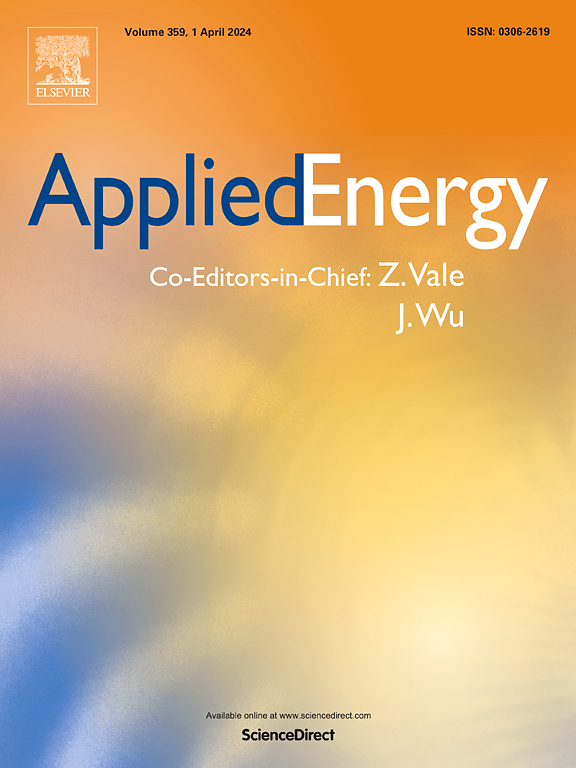Every coin has two sides: Dual effects of energy transition on regional sustainable development—A quasi-natural experiment of the New Energy Demonstration City Pilot Policy
IF 11
1区 工程技术
Q1 ENERGY & FUELS
引用次数: 0
Abstract
Energy transition policies are crucial in restructuring energy supply and demand, mitigating global warming, and fostering regional sustainable development. As a pivotal pilot initiative in China's energy transition, the New Energy Demonstration City Pilot (NEDC) policy has garnered substantial interest from industry and academic circles. This study employs panel data from 1749 counties in China spanning 2010–2021, treating NEDC policies as a quasi-natural experiment and utilizing the TWFE-DID model to analyze their impact on regional sustainable development. This study further investigates the policy's underlying mechanisms for promoting regional sustainable development and examines its negative effects from the perspectives of geographical location, and regional type. The study finds that: (1) The NEDC policy significantly enhances the sustainable development level of counties,with robust results from various tests; (2) The NEDC policy advances sustainable development in pilot areas by fostering technological innovation, enhancing energy efficiency, optimizing the energy structure and land use structure; (3) The NEDC policy has two primary negative effects: first, it may induce the “pollution haven effect”, which hinders the sustainable development of neighboring regions; second, it may disrupt the industrial transformation of Growing resource-based cities, further exacerbating urban-rural development inequalities. The results of this study suggest that when formulating and implementing energy transition policies, the government should carefully consider regional disparities and prioritize social equity to mitigate the potential negative social impacts associated with these policies.
事物都有两面性:能源转型对区域可持续发展的双重影响——新能源示范城市试点政策的准自然实验
能源转型政策对于调整能源供需结构、减缓全球变暖和促进地区可持续发展至关重要。作为中国能源转型的重要试点举措,新能源示范城市试点(NEDC)政策受到了业界和学术界的广泛关注。本研究采用 2010-2021 年中国 1749 个县的面板数据,将 NEDC 政策视为准自然实验,利用 TWFE-DID 模型分析其对区域可持续发展的影响。本研究进一步探究了该政策促进区域可持续发展的内在机制,并从地理位置和区域类型的角度考察了其负面效应。研究发现(1) NEDC 政策显著提高了县域可持续发展水平,各种检验结果都很可靠;(2) NEDC 政策通过促进技术创新、提高能源效率、优化能源结构和土地利用结构,推动了试点地区的可持续发展;(3) NEDC 政策主要有两个负面效应:一是可能诱发 "避风港效应",阻碍周边地区的可持续发展;二是可能扰乱资源型成长城市的产业转型,进一步加剧城乡发展不平等。本研究结果表明,政府在制定和实施能源转型政策时,应认真考虑地区差异,优先考虑社会公平,以减轻这些政策可能带来的负面社会影响。
本文章由计算机程序翻译,如有差异,请以英文原文为准。
求助全文
约1分钟内获得全文
求助全文
来源期刊

Applied Energy
工程技术-工程:化工
CiteScore
21.20
自引率
10.70%
发文量
1830
审稿时长
41 days
期刊介绍:
Applied Energy serves as a platform for sharing innovations, research, development, and demonstrations in energy conversion, conservation, and sustainable energy systems. The journal covers topics such as optimal energy resource use, environmental pollutant mitigation, and energy process analysis. It welcomes original papers, review articles, technical notes, and letters to the editor. Authors are encouraged to submit manuscripts that bridge the gap between research, development, and implementation. The journal addresses a wide spectrum of topics, including fossil and renewable energy technologies, energy economics, and environmental impacts. Applied Energy also explores modeling and forecasting, conservation strategies, and the social and economic implications of energy policies, including climate change mitigation. It is complemented by the open-access journal Advances in Applied Energy.
 求助内容:
求助内容: 应助结果提醒方式:
应助结果提醒方式:


